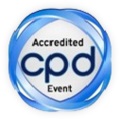
Laurent Thum
Geologist, Lausanne, Switzerland
Title: 2D and 3D GIS-based geological modeling – application for geotechnical investigations, tunneling and mining
Biography
Biography: Laurent Thum
Abstract
Knowledge of sub-surface characteristics in the context of a civil engineering project is essential to reduce the risks related to geological uncertainties. In the quest to improve geological models, modern GIS tools facilitate the acquisition, management and interpretation of data. It was in parallel with the Ceneri base tunnel project, one of the longest tunnels in Switzerland, that 3D digital mapping and modeling tools were developed in ESRI’s ArcGIS Desktop. The geological and geotechnical monitoring during the excavation of the tunnel has been optimized with digital tablet mapping and automated 3D modeling of geological elements. The discontinuities (faults, joints, strata interfaces) as well as a certain number of specific points of information (water ingress points, samples, etc. ...) are drawn on a model of the tunnel walls, and are then georeferenced and modeled in 3D using geoprocessing tools. These objects can then be viewed in their actual geographical position on a geological map of the project (horizontal cross-section halfway up the tunnel), as well as in a 3D model. A graphic parallel to the tunnel axis automatically displays all the numerical data related to the progress. The adaptation of the technique for monitoring underground mining is underway. Since exploratory drillings have a decisive role in this type of project, a tool to model them in 3D, based on their geometrical characteristics (coordinates, azimuth, dip), has been developed; it is used to represent data such as stratigraphic layers, the level of the water table, water inflows, in situ and laboratory tests values. The developed GIS tools allow rapid and accurate modeling and synthesis of a large quantity of data and helps improve the safety and performance of the works

